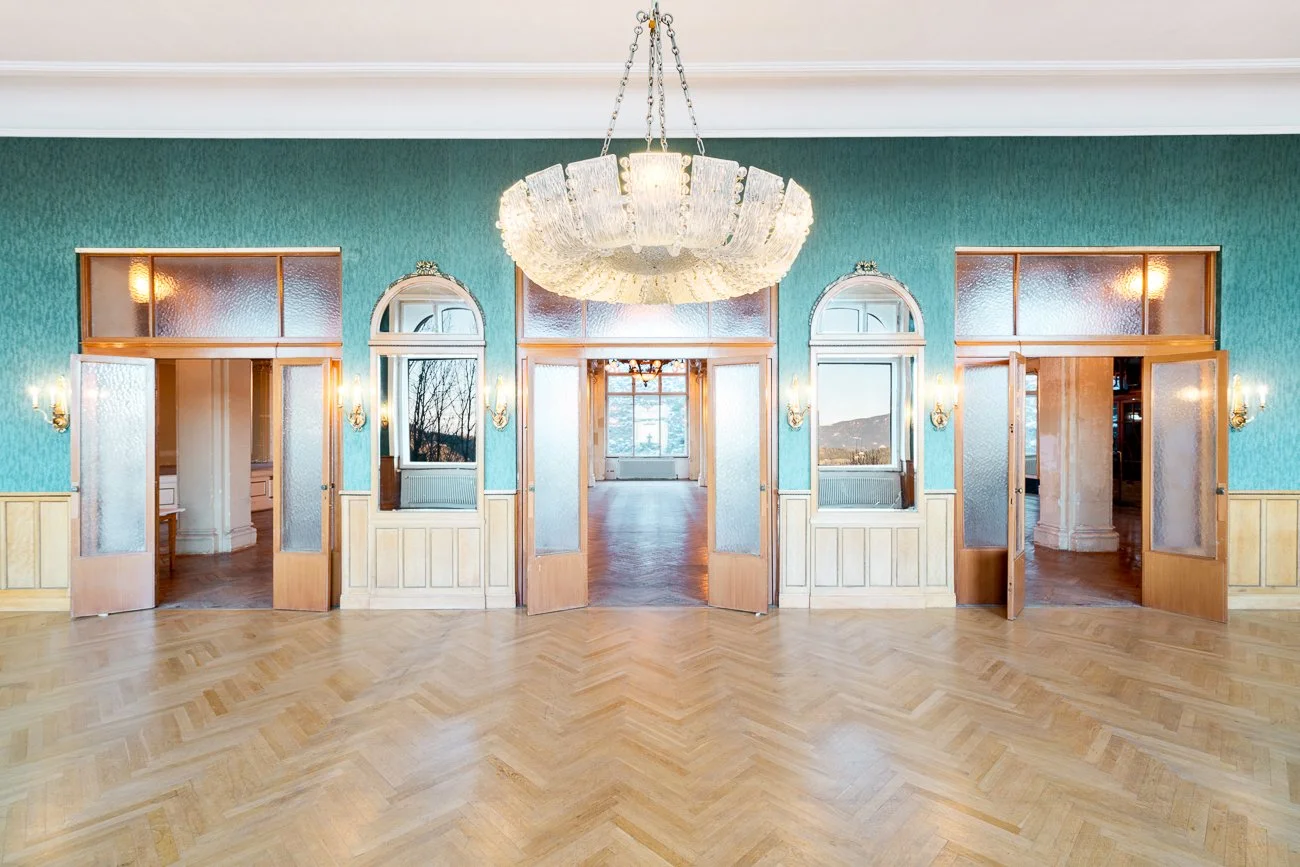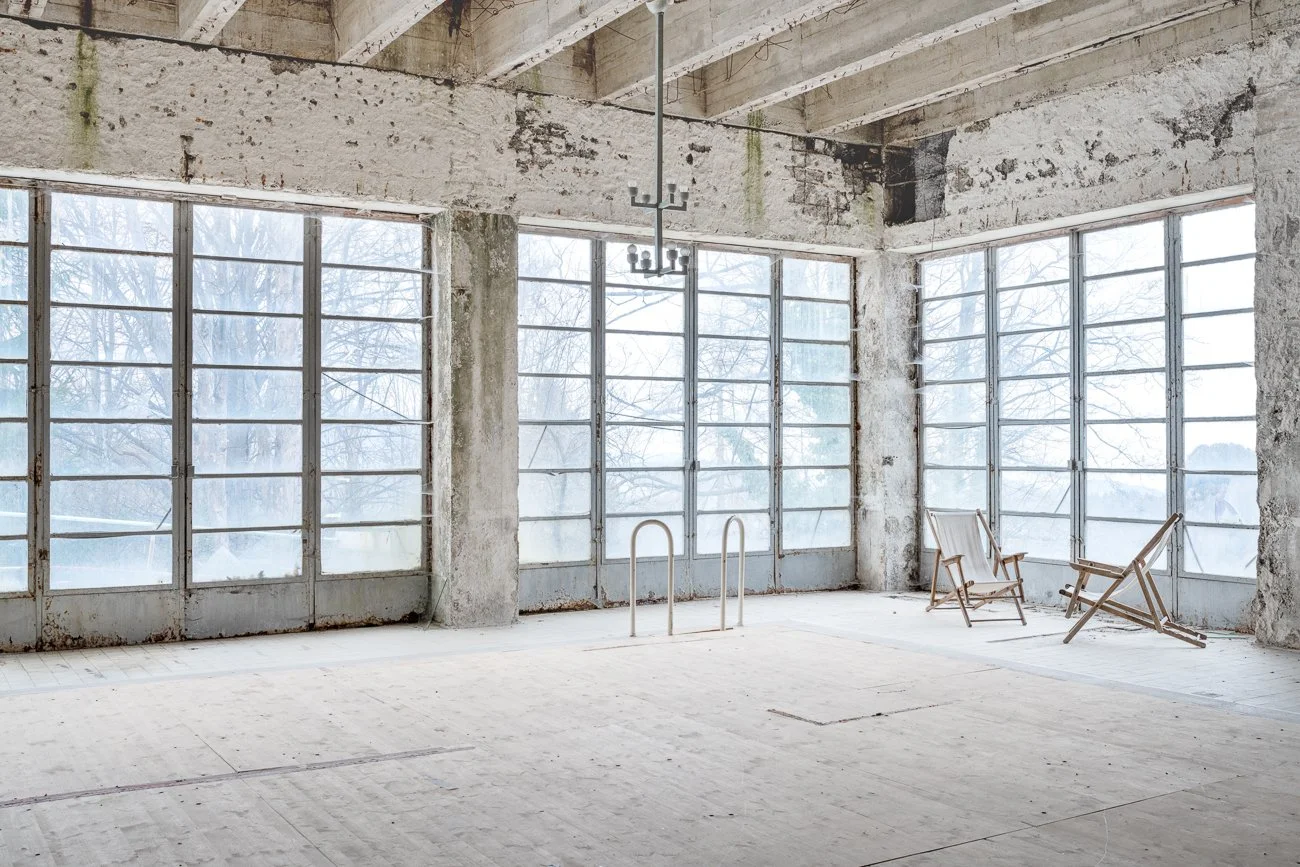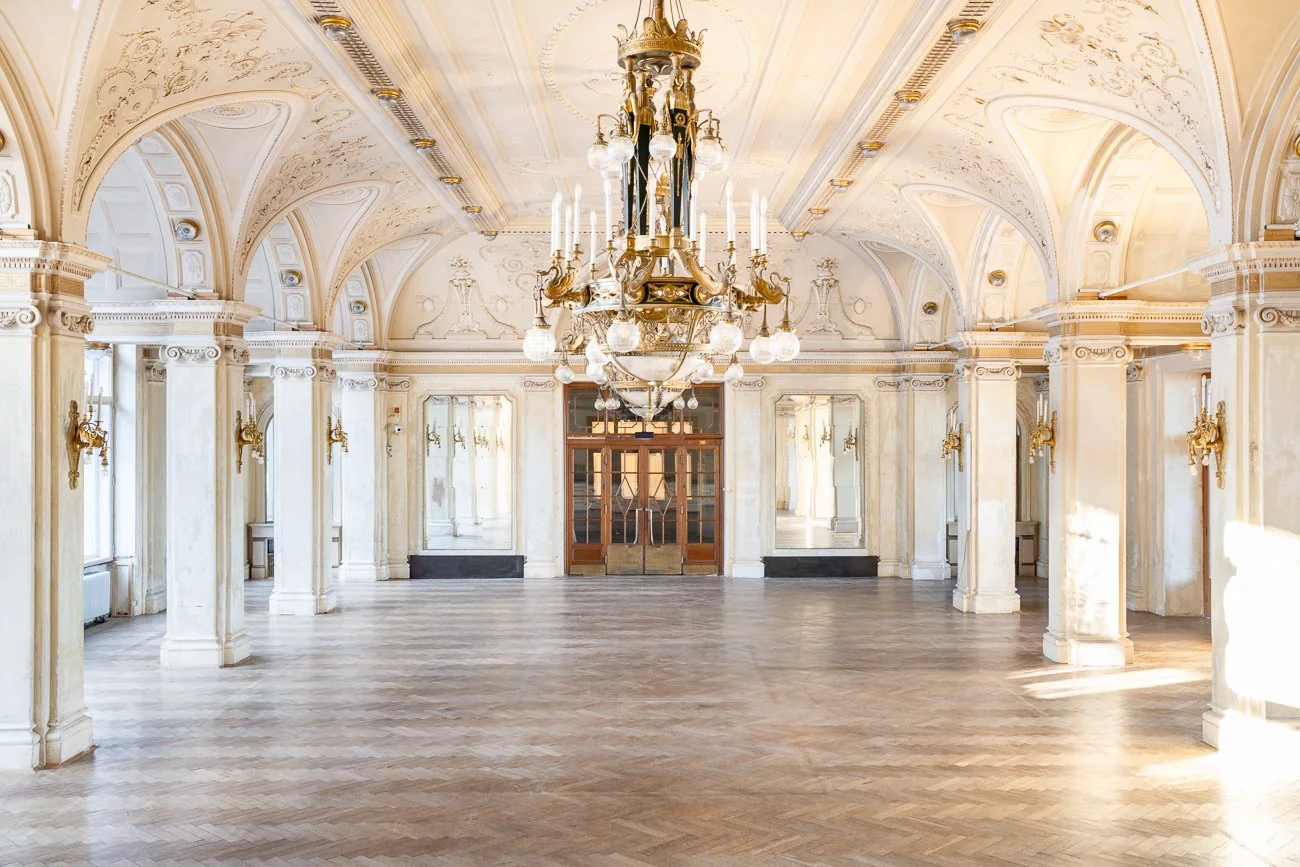The
Südbahnhotel
Perched high above, where the Southern Railway reaches its peak, there is an almost unreal place of beauty. Slightly removed from the world, yet always a stage for its time, the legendary Südbahnhotel Semmering is enthroned here.
Opened in 1882, the architecturally breathtaking grand hotel quickly developed into a dazzling "place to be“ for artists, aristocracy, free spirit and bon vivants from all over the world. Names like Queen Marie of Romania, Sigmund Freud or Karl Kraus graced the hotel’s halls.
The Südbahnhotel is - then as now - a truly unique place of art and culture, freedom and possibilities, encounter and art of living. All of this embedded in the magnificent natural, cultural, and experiential landscape of the UNESCO World Heritage Site Semmering Railway.
Today, the Südbahnhotel remains a unique destination, offering a perfect blend of history, culture, and nature. Immerse yourself in the inspiring atmosphere and discover why this place has captured the hearts of so many.
Where past and present merge
The History
The original Südbahnhotel Semmering - also called "Hotel Semmering" or "First Südbahnhotel" - was the first hotel in Semmering. It opened in 1882 at the foot of the Pinkenkogel - at exactly 1000 meters above sea level - and was one of several grand hotels along the Southern Railway line from Vienna to Trieste. These were commissioned by the privileged Imperial-Royal Southern Railway Company to promote tourism in the respective regions.
Semmering, thanks to the pioneering achievement of the Semmering Railway, was already easily accessible at that time and was consequently developed into a prestigious holiday and health resort. It was popular with Viennese society as well as with a multinational clientele from all parts of the Austro-Hungarian Monarchy.
The fin de siècle and Belle Époque are two periods at the end of the 19th and the beginning of the 20th centuries that were not only socially and historically significant for the Südbahnhotel Semmering but also marked the beginning of a part of Austrian tourism history.
Chronicle
Learn more about the historical milestones in the development of
the Südbahnhotel Semmering
-
19.09.1879
Purchase of the real estate plot (including the building) from Semmering farmer Polleros around 4000 Florin through a consortium around the sculptor and the academic painter Franz Schoenthaler sen. (1821 – 1904) and the General Director at that time of the K.u.k. privilegierte Austrian Südbahngesellschaft (Imperial and Royal Privileged Southern Railways Company), Friedrich Julius Schueler (1832 – 1894)
29.05.1881
Formal ground-breaking ceremony for the construction of the “Hotel Semmering” (the Südbahnhotel was referred to in the beginning as the “Hotel Semmering” or retrospectively also as the “First Südbahnhotel”). The architect of this First Südbahnhotel at Semmering was architect Franz Wilhelm. The selected building style was the “Swiss style”
15.07.1882
Opening of the Hotel Semmering (60 rooms) with champagne. The basis for the rapid tourism and also societal
development of the Semmering region was thus laid. For tourism in Austria, the construction of this hotel was already of far-reaching importance as well as all grand hotels of the K. u. k. priv. Südbahngesellschaft for the invigoration of the Südbahn route from Vienna to Trieste. Additional grand hotels of the K. u. k. priv. Südbahngesellschaft were and/or are located in: Abbazia, currently known as Opatija (Croatia, 1884) and Toblach (southern Tyrol, 1878)
1889
Construction of the elegant Waldhof annex (50 rooms) in close proximity to the Südbahnhotel. This had become necessary because the Südbahnhotel was constantly completely booked and, on the other hand, in order to be able to appropriately house the aristocratic guests. As the result of a major fire, the Waldhof annex was reconstructed in 1893/1894 based upon the plans of Josef Daum. On 22 March 1902, a second fire broke out. As a result, the Waldhof annex was not able to be used temporarily until December 1902
-
19.09.1879
The property was purchased from the Semmering farmer Polleros for 4,000 florins by a consortium led by the sculptor and academic painter Franz Schönthaler Sr., as well as the then director general of the Imperial-Royal Austrian Southern Railway Company, Friedrich Julius Schüler (1832-1894).
1901 – 1903
Construction of the Second Südbahnhotel (also referred to as the Palace Hotel) directly adjacent to the restaurant of the First Südbahnhotel under the management of the architects Alfred Wildhack and Robert von Morpurgo
1906 – 1908
New construction of the steam laundry business which operated until 1960. In 1993, the real estate property (approx. 1 km away from the Südbahnhotel) was acquired by the building contractor Otto Geiger and converted into residential housing
1908
Third construction phase of the Südbahnhotel: Construction of the post office and telegraph office as well as a coffee house. Architect: Alfred Wildhack
1912/13
The largest construction phase of the Südbahnhotel was this expansion in which, firstly, a new dining room was constructed which was linked via a passageway to the Waldhof. Secondly, the old restaurant (1882) was torn down and a new 3-storey restaurant was constructed. During this construction phase, two old German beer bars were constructed as well as a modern cinematic theatre. The wide-ranging renovation produced a completely new room organisation and organisational processes. After it was completed, the Südbahnhotel had at that time, including the Waldhof and all annexes, approx. 350 guest rooms. Architect: Alfred Wildhack
1922
The hotel central section was heightened with an attic. The central section – the Director’s flat was also located here – was used exclusively for operational purposes
1926
Opening of the Semmering Golf Course, the 1st and thus oldest golf course in Austria, where once the ski-training area and the ski-jumping hill of the Südbahnhotel were located. Still located there today, the “Meierei” (Dairy Farm) was originally a farm which was acquired in 1885 by the Südbahngesellschaft. It was renovated around 1902 to become a picturesque breakfast pension with dairy farm operations. Peter Rosegger (a famous Austrian author, 1843 – 1918) was also a guest at the Südbahnhotel
1928 – 1931
The Südbahnhotel’s garage was constructed on the site of the old horse stables. Planning: Emil Hoppe and Otto Schoenthal (both Otto Wagner pupils). The garage was located below the Südbahnhotel, was torn down in 1982 and replaced with residential housing
18.08.1932
Opening of the very modern cubic “indoor swimming pool” in the Südbahnhotel with terraces. The pool itself has dimensions of 20 x 8 m. Architects: Emil Hoppe and Otto Schoenthal
1932 – 1934
Expansion and redesign of the hotel entrance area to form a function, modern and spacious entrée area, construction of an American bar in the hotel lobby. The ceiling downstand beams and columns in the four-axis hotel lobby were adorned with wood in the Neo-Empire style. Architects: Emil Hoppe and Otto Schoenthal
1939 – 1940
Military hospital operation
1940 – 1942
Hotel
1942 – 1945
Military hospital operation
1945 – 1947
Russian occupation
12.05.1948
Reopening of the hotel by the DOSAG (Donau Save Adria Eisenbahngesellschaft)
1971
Sales of the hotel to a Carinthian private company
1974
Conversion of the “First Semmering Hotel” from 1882 into condominiums and the separation from the “Second Südbahnhotel”
1976
Cessation of hotel operations
1980
Acquisition of the “Second Südbahnhotel” by the Südbahn Ges.m.b.H.
1993
Acquisition of the “Second Südbahnhotel” by the current owner
since 1994
Conducting essential restoration work in order to preserve the “Second Südbahnhotel” (e.g. completely new roof, partial fundamental upgrading of the building technology, incl. technical preparatory work for the expansion work, on-going maintenance of the real estate plots of the Südbahnhotel, and much more)
-
2000 – 2010
The Südbahnhotel was, respectively in the summer, the venue of the always sold-out “Reichenauer Festspiele (Reichenau Festivals)” with works from, among others, Thomas Mann – „Der Zauberberg (Magic Mountain)“, Karl Kraus – „Die letzten Tage der Menschheit (The Last Days of Humanity)“ and Arthur Schnitzler – „Das weite Land (The Wide Land)“ and „Traumnovelle (Dream Novellette)“
Summer 2017 – summer 2021
In the summer months 2017 – 2021 the Südbahnhotel was the venue, the fascinating scene and the stage for the Kultur.Sommer.Semmering
January 2022
In January 2022, SBH Immobilienbesitz GmbH, a company owned by Austrian real estate entrepreneur and cultural promoter Mag. Christian Zeller, acquired the Südbahnhotel Semmering. A year-round, international art-, culture- and events program is offered since summer 2022.
Celebrity guests at the Südbahnhotel over the Centuries:
Archduke Albrecht, Eduard Ritter von Engerth (teacher, gallery director, art writer, and portrait painter of the imperial family and nobility, as well as designer of the wall decorations in the imperial box at the Vienna State Opera), Princess Maria of Greece with her family, Their Royal Highnesses Prince and Princess Elmer von Lonyay, Count Dubsky, Ida von Ferenczy (Dame of the Order of the Starry Cross and long-time confidante of Empress Elisabeth), Baron Franz Kubinsky, Prof. Dr. Sigmund Freud, Queen Marie of Romania, and prominent artists such as: Gustav Mahler (Director of the Vienna Court Opera) with his wife Alma Mahler, Oskar Kokoschka, Egon Friedell, Peter Altenberg, Adolf Loos with his wife Lina, Franz Werfel, Gerhart Hauptmann, Otto Zarek, Hans von Hülsen, Adrienne Gessner (Burgtheater actress), Kolo Moser (co-founder of the Vienna Secession and the Wiener Werkstätte), Karl Kraus, and many others.
Let yourself be inspired as well – we look forward to your visit!
Guided Tours
Explore the grandeur of a bygone era in this historic grand hotel. From the opulent dining hall to the intricate craftsmanship and the countless stories that have unfolded within its walls, there's something to discover around every corner.
Embark on a journey through time as our knowledgeable guides reveal the many facets of the Südbahnhotel.
“Glory of days gone by”
This tour delves into the history and heyday of this unique grand hotel, exploring its architecture, guests, and exclusive atmosphere.
Duration: approx. 90 minutes
Price: €26 per person
Custom tours for groups and schools available upon request. Please contact us for more information.
Depending on our guides' availability, the following additional tours are available upon request.
-
A personal tour curated by a local, showcasing the hotel's history and architecture with a special focus on the artists, intellectuals, and strong women who have shaped this iconic place.
Duration: approx. 90 minutes
Price: €26 per person -
Discover the scandalous affairs and intriguing relationships of the artists, aristocrats, and socialites who frequented this glamorous mountain retreat.
Duration: approx. 90 minutes
Price: €26 per person -
Learn about the secret alliances and public romances that unfolded within the hotel's walls.
Duration: approx. 90 minutes
Price: €26 per person -
Explore the culinary delights of the hotel's heyday, from the menus to the beverages, and enjoy a sparkling aperitif.
Duration: approx. 90 minutes
Price: €30 per person inkl. drink -
Discover the origins and significance of the Semmering, the Südbahnhotel's role in luxury alpine tourism, and the Jewish community that frequented the hotel.
Duration: approx. 60 minutes
Price: €3 per person up to 25. Regular: €20













